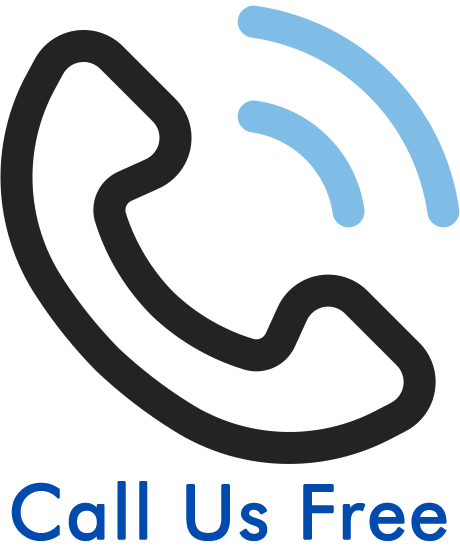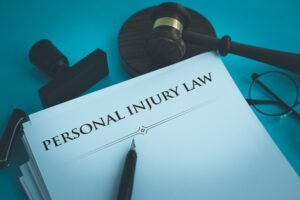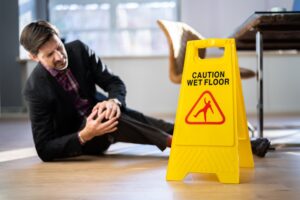By Danielle Graves. Last Updated 2nd September 2024. This guide has been put together to help you understand what public liability claims are, and whether or not you could be owed compensation. Additionally, it answers important questions, such as “What is public liability insurance?” and “When can I make a public liability claim?” It also tells you how a settlement is calculated, among other helpful topics related to making a compensation claim.
Our advisors are always on hand to answer any questions you may have regarding a potential personal injury claim caused by a public liability accident. Contact us for free today to discuss any query you have about personal injury claims and to see if you’re eligible to make a public liability compensation claim.
You can call on 0161 696 9685, or there are other ways to reach out:
- Use the pop-up chat window in the corner
- Submit an online enquiry
Select A Section
- When Could You Make A Public Liability Claim?
- What Types Of Accidents Could Lead To A Public Liability Claim?
- Evidence Supporting Public Liability Claims
- Public Liability Compensation Payouts
- No Win No Fee Public Liability Claims
- Discover More About Claiming For Public Liability Accidents
When Could You Make A Public Liability Claim?
Occupiers are anyone who controls a public space. Under the Occupiers’ Liability Act 1957, all occupiers owe a duty of care to those who visit their space for the intended purpose. This means that occupiers must take steps, such as displaying warning signs for any hazards , to ensure the public’s reasonable safety. If occupiers do not take the steps that are expected from them, this is a breach of duty of care.
There are three criteria that must be met in order to make a public liability claim:
- Establish that you were owed a duty of care. For example, you were in a supermarket.
- Show that this duty of care was breached. For example, there was a spillage in the middle of an aisle that the occupier was aware of, but no wet floor signs were displayed.
- Prove that an injury was sustained as a result of this breach. For example, you slipped and fell, which led to a broken bone.
It’s only by proving all three of the aspects above that you would be eligible to make a public liability claim. To learn more about claiming compensation, please contact us for free using the details above.
Does An Occupier Need To Have A Public Liability Insurance Policy?
As a member of the public, if you are claiming compensation against an occupier, a public liability insurance policy is the type of insurance that they will use.
Here are the facts that you need to know about public liability insurance:
- It is not a legal requirement for an occupier to have public liability insurance.
- However, many occupiers will have this insurance.
- You can still claim against an occupier if they don’t have insurance.
If you have had an accident in a public place, you are well within your rights to make a public liability claim if you can prove that your injury was caused by a breached duty of care. To learn more about claiming personal injury compensation, contact our advisors today.
Is There A Public Liability Claim Time Limit?
Yes, there is a time limit to begin a public liability claim, as set out in the Limitation Act 1980. This time limit is 3 years and starts from the date of the accident.
However, there are some cases where this time limit is suspended. To find out what these cases are, please don’t hesitate to get in touch and ask us.
What Types Of Accidents Could Lead To A Public Liability Claim?
Below, we have included some examples of where public place accidents could occur and how they could be caused by a breach of duty. This can give you a better idea of when you may be able to make a public liability injury claim.
- Slips and falls – An employee could have dropped a product they’re stocking and caused a slip hazard. If this is not signposted with a wet floor sign in a reasonable amount of time, it could result in a slip, trip or fall. This could occur in a shop or supermarket, for instance.
- Injuries on faulty equipment – Those in control of these areas should ensure that equipment is well-maintained, for example. You could sustain a gym injury on a faulty piece of equipment that was not repaired and did not have an “out of order” sign on it. Your child could also suffer an injury due to using a faulty swing at a public park, for example.
- Burns and scalds – For example, if you are washing your hands in a public toilet and the hot water tap is unreasonably hot, this could result in you sustaining a scald injury on the hot water or a burn injury on the tap.
- Cuts and lacerations – If you were in a bar or nightclub and there was broken glass on a table or the floor, then this could cause you to be injured. If the nightclub staff knew about the hazard but did not clean it up then this could be an example of negligence. This type of injury could also happen in a pub or hotel.
To find out if your circumstances mean you could be eligible to make a public liability claim and receive compensation, get in touch with our advisors.
Evidence Supporting Public Liability Claims
Successful public liability claims depend on being able to prove that the criteria we discussed previously are met. Evidence is key to a public liability claim, examples of which are:
- CCTV footage. You can request footage of the incident and its cause.
- A copy of the report logged in the place’s accident book.
- Photos of your injuries and the scene of your accident.
- Contact details for possible witnesses. They can give statements later on in the claims process.
- A medical report. You can ask for a copy of your health records, which would highlight what harm you’ve suffered.
If you work with a solicitor, they can help you piece together evidence and present it as part of your case. If you’d like to have the personal injury claim process explained to you, including the part proof plays in claiming compensation, just call for a free discussion.
How Long Does A Public Liability Claim Take?
The length of a public liability claim varies from case to case. There is no set length of time that a claim can be completed. It doesn’t matter whether you’re claiming through the occupier’s public liability insurance or claiming against them directly. There are many variables that determine how long a public liability compensation claim can take. These include:
- The amount of evidence in the claim.
- Whether the occupier accepts liability for the injury.
- Whether the occupier actually has public liability insurance.
- The extent of your injuries.
Therefore, we’re unable to provide you with an accurate timescale for making a public liability claim. Some claims can take a few months, some can take a year or more. However, we can answer any questions you have about making a public liability injury claim, so why not contact us? You can do so for free using the above details.
Public Liability Compensation Payouts
You may be wondering, “How much compensation for a public liability accident?”
Public liability claims require evaluation on a case-by-case basis. The settlement you receive could consist of two different kinds of claims. The head of claim that compensates you for the level of pain and suffering caused by your injury is known as general damages. This compensates you for any injuries sustained by occupier negligence.
When working out the value of your general damages payment, legal professionals make use of resources such as medical evidence, and a publication known called the Judicial College Guidelines (JCG). Below are some of the latest figures from the JCG. This shows what you could receive from a compensation claim.
The table below shows some example figures from the latest edition of the JCG. However, you should use them as a guideline only when determining how much you could receive from a public liability compensation claim.
| Injury | Severity | Notes | Potential Payout |
|---|---|---|---|
| Multiple serious injuries and expenses | Very Severe | Settlements can include payouts for multiple injuries of a very serious nature and any expenses required to cope with these injuries, such as mobility aids, lost income and the costs of nursing care. | Up to £1,000,000+ |
| Brain Damage | Very Severe (a) | The injured party needs full time nursing care as a result of having no meaningful environmental responses, double incontinence and no language function due to a brain injury. | £344,150 to £493,000 |
| Foot | Amputation of Both Feet (a) | This bracket applies where both feet have been amputated and the ankle joints lost. | £206,730 to £245,900 |
| Severe (d) | The claimant suffers with substantial mobility restrictions and/or permanent and considerable pain due to fractures of both feet, or an unusually severe injury to one foot. | £51,220 to £85,460 | |
| Back | Severe (a) (i) | Injuries in this bracket result in a combination of very serious consequences due to spinal cord and nerve root damage. | £111,150 to £196,450 |
| Severe (a) (iii) | The claimant has continuing severe pain and discomfort, impaired agility and sexual function, and personality changes due to injuries that include disc lesions, fractures or soft tissue injuries. | £47,320 to £85,100 | |
| Neck | Severe (a) (i) | This bracket applies to a neck injury that results in permanent spastic quadriparesis or paraplegia that is incomplete. | In the region of £181,020 |
| Moderate (b) (i) | The claimant suffers severe immediate symptoms from fractures or dislocations or has a chronic condition that causes functioning impairments and vulnerability to further neck trauma. | £30,500 to £46,970 | |
| Arm | Severe (a) | Although injuries in this bracket fall short of amputation, they are extremely serious and leave the claimant not much better than if it had been amputated. | £117,360 to £159,770 |
Special Damages In A Public Liability Claim
You may also be able to claim compensation for special damages. This head of claim is to account for the financial effect that an injury could have on you. It can include costs associated with losses such as:
- Medical expenses
- Loss of earnings
- Damage to your personal property
- Care at home
- Travel expenses
In order to claim special expenses in a public liability injury claim, you would need to have evidence. Financial evidence can include receipts, invoices and bank statements. To claim compensation for special damages, you would need to prove that your injury was caused by occupier negligence.
To find out more about the potential value of public liability compensation payouts, get in touch with our advisors.
No Win No Fee Public Liability Claims
If you get in touch with our advisors, they could connect you with a No Win No Fee solicitor from our panel. Our panel of solicitors could work your claim using a No Win No Fee agreement known as a Conditional Fee Agreement (CFA).
When working with a No Win No Fee solicitor, there are no upfront costs to worry about. Instead, your lawyer takes a small percentage of your settlement as payment following a successful claim. If your claim fails, they do not take this fee from you.
Furthermore, you could make a public liability claim without worrying about paying your solicitor’s legal costs or any ongoing fees. These will be taken from your compensation amount at the end of a successful claim. Any solicitor fee for a public liability claim will be taken at the end of claim and this will all be discussed with you before you agree to use their services.
Our panel of expert personal injury lawyers can evaluate your case and tell you quickly and easily if you’re able to claim. To learn more about making a No Win No Fee public liability claim, get in touch with us at a time that works for you.
Speak To An Expert About Making A Public Liability Claim
For free advice about public liability claims or to learn more about claiming through public liability insurance, please get in touch. Whilst there is no obligation to begin a claim if our advisors think yours could be valid, they could help you get the ball rolling by putting you through to an expert lawyer from our panel.
Our panel of public liability lawyers have years of experience and can help you claim on a No Win No Fee basis. They could help you get the appropriate compensation you deserve for the injuries you’ve suffered.
Our claims team are always available. This means you can reach out on a 24/7 basis:
- Call on 0161 696 9685
- Use the pop-up chat window in the corner
- Begin the process of making a claim and submit an online enquiry
Discover More About Claiming For Public Liability Accidents
We’ve included some links to additional resources below. They should help you better understand the topic of claiming due to an occupier’s negligence and learn more about what public liability insurance is.
More of our guides:
- Learn more about claiming if you’ve tripped on the pavement
- Public liability claims for an accident in a garden
- See if you could claim for a hotel radiator burn
- If you tripped on a rug in public because of another party’s negligence, then you may have valid grounds to claim compensation. You can read our guide on claiming for this type of accident to learn more.
Information from other trusted sources:
- Government information on litigation friends
- Information from the NHS on how to get your medical records – you could use these as evidence to support your claim
- “How do I know if I’ve broken a bone?” – an NHS guide
Written by DB
Edited by FS




